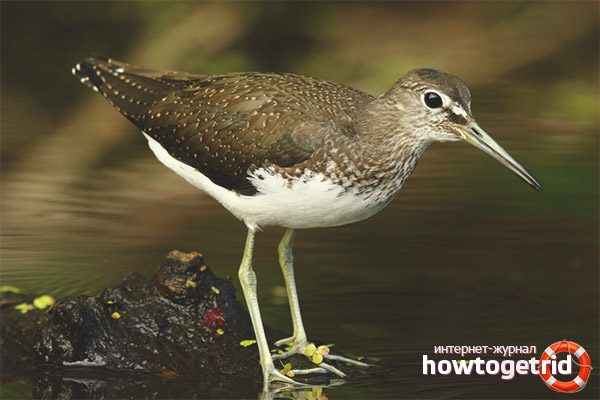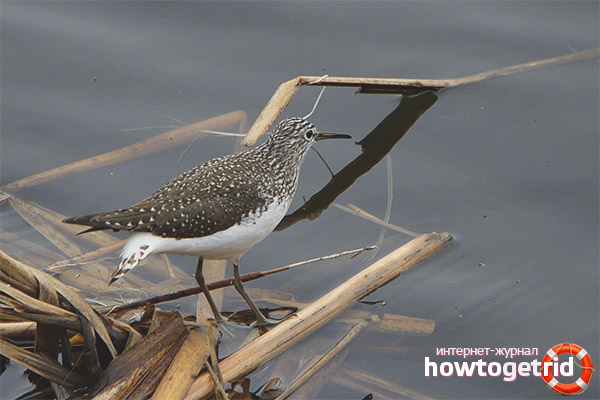The content of the article
Outwardly, black is very similar to a fifi bird. In the considered individual from under the wing, one can observe fewer dark bands that can be seen on the tail. The bird is unique in nature. She has an unusual appearance and peculiar characteristic features. Let's get acquainted with this individual in more detail.
Appearance
- The individuals belong to the snipe family. It is worth noting that most people make a gross mistake by confusing such a bird with fifi. The considered individuals are very small in size. Their weight can reach hardly 90 gr. In this case, the length of the body may be slightly more than 20 cm.
- Among other things, black has quite long legs. The same can be said about their unique beak. Such parts of the body can be compared in proportion to the chistik and lapwing birds. As for the individuals under consideration, they have the same color of the beak and paws.
- If you look at the body from below, you can see that the plumage has a fairly light color. The neck and upper body are brownish in color. In this case, white blotches may be present. The eyes are black, the tail is medium in size. As for the distinguishing features between the female and the males, they are not.
Spread
- Individuals belong to migratory birds. Often birds are found in Northern and Central Eurasia. As for the European regions, individuals mainly live in the eastern regions.
- Birds go for the winter to the southern regions. Often during the migration of the considered individuals can be found in Africa, Europe and the Middle East. Birds are often seen during flights in Italy. Some individuals in the same region and remain for the winter.
Nutrition
- Separately, it is worth noting that small individuals simply can not eat large fish and the same insects. Therefore, the birds try to choose their own smaller food, unlike other similar birds.
- Blacks are quite capable of eating food of animal origin. The birds enjoy treating themselves with mollusks, worms, dragonflies, crustaceans, small insects, larvae and beetles. Often individuals can afford algae, plants and some types of herbs.
Lifestyle
- Blackies arrive at nesting places rather early. If these are southern regions, then birds can be seen already in early April. In the northern regions, birds arrive in early May. Individuals make a flight at any time of the day. Moreover, they can migrate individually or in small groups.
- During flights, the birds always stop for rest and feeding. Therefore, blacks are often found on the shores of lakes, rivers, and even near ditches and large puddles. In nesting sites, individuals try to settle at a sufficient distance from each other. Birds begin to fly already in flight. At the same time, they sing beautifully.
- Blackies try to nest in small forest swamps. It can also be streams, slow rivers and flooded forest roads. Individuals are found even in rare forests where glades are flooded with water. Also, birds live in places of temporary reservoirs.
- Due to the fact that individuals predominantly live in forest areas, they have formed quite wide and at the same time short wings. It is thanks to this feature that the considered individuals can maneuver between trees at high speed without any problems.
- Often such birds during nesting occupy the old nests of jays, blackbirds, pigeons, ravens and other birds. Also, blacks often settle in squirrel burrows. In addition, the birds in question are quite often taken to the construction of the nest from scratch.
- If birds build their own homes, then often they do it almost on the ground. In this case, the nest can be located at the base of the trunk or stump. Also, dwellings were seen on the swamp bumps and the tops of decayed stumps.
- At a time, the female can bring no more than 4 eggs. Both parents are involved in the siting of future offspring. In this case, the procedure lasts about 3 weeks. Birds try to make nests hidden. If the blacks see danger, they fly off the dwelling and wait until everything is settled.
- Almost immediately after birth, young growth begins to leave the nest. At first, both parents take care of the chicks. After some time, exclusively the male continues to be engaged in upbringing. This continues until the young growth is stronger and does not stand on the wing.
The birds under consideration are quite interesting individuals, which can be observed endlessly. Young growth learns to fly after it turns about 1 month old. Birds begin to migrate from the end of August. At this time, individuals feed on various insects, water bugs, larvae and bugs.











Submit